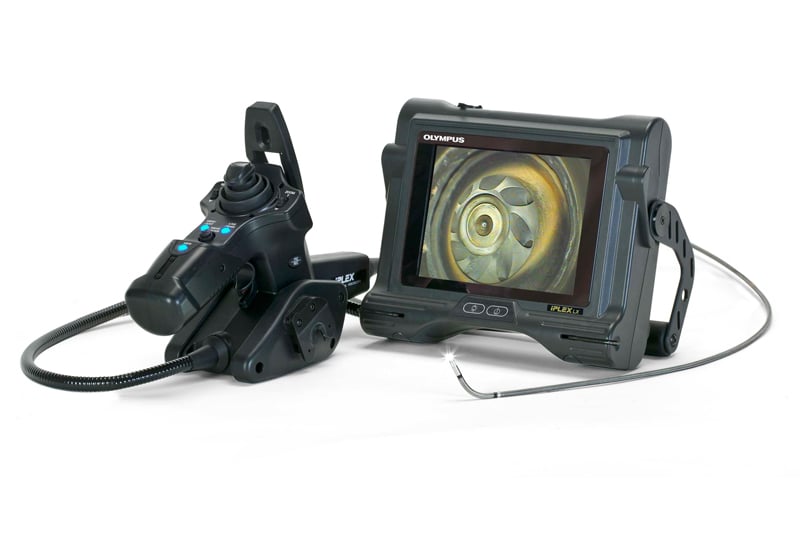Three Types of Borescopes, Pick the Right Tool for the Job.

Technological advancements in the field of pipe inspection cameras (RVI) such as improved imaging quality, greater accuracy and integrated robotics are among the reasons that this particular sector of non-destructive testing (NDT) is continuing its upward growth path. Experts predict that the wider visual inspection market will have a compound annual growth rate around 8% with the RVI component contributing an increasingly larger portion as adoption rates for these remote technologies grow.
Other growth drivers for the RVI market are the ease-of-use of many of the instruments, greater affordability and an increase in the number of skilled and certified RVI technicians. In this article, we examine three pieces of equipment that are essential when it comes to visual inspection, namely the borescope, the fiberscope and the videoscope.
Borescope
The borescope was one of the first instruments which pioneered the visual inspection industry, enabling technicians to view the inspection area through an illuminated stainless steel tube. An attached camera records images of the viewsite as well as enables technicians to see the inspection area on a larger screen. Borescopes are priced at the lower end of the scale because of their limited range of applications (the rigid tube can’t be bent which means it has to have direct access to the test area).
Fiberscope
Fiberscopes took borescope design to a new level of flexibility and function. The stainless steel tube was replaced with optical fibres which meant users could remotely inspect an object or area with the number of fibre optic strands dictating the level of image quality. The fibres also act as the light guide, and as with a borescope, an attached camera records images or enables them to be seen on a large screen. Unsurprisingly, fiberscopes are often called flexible borescopes.
Videoscope
For more information on RVI and other NDT products and technologies, contact the experts at Nexxis. As one of the country’s leading suppliers of NDT inspection equipment, we are at the forefront of technological developments and are able to offer advice and products to meet any inspection need.


